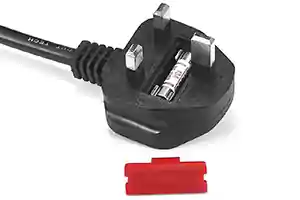So that’s how I understand dc power connector types.
Now I want to turn it over to you: Through my article, you understand how to choose and what are the standards?
Do you have a different point of view with the electrical outlet? Or any other questions?
Let me know by leaving a quick comment below right now.
Table of Contents
What is a dc power connector types?
A DC connector (or DC plug, for a common type of connector) is an electrical connector used to provide direct current (DC) power.
There are more standard types of DC connectors than domestic AC power plugs and receptacles, which are not interchangeable. The size and arrangement of DC connectors can be selected to prevent the accidental interconnection of incompatible power supplies and loads. Types vary from small coaxial connectors used to power portable electronic devices from AC adapters to connectors used for battery packs in automotive accessories and portable devices.(dc power connector types)
SAE Connectors
The SAE connector is a physically self-mating, hermaphroditic, two-conductor DC connector typically used in solar and automotive applications (also motorcycles). It is named after the Society of Automotive Engineers that created the specification on which this connector is based.(dc power connector types)
Although the plugs are physically androgynous and any SAE connector can be connected to any other SAE connector, they are not electrically androgynous, and care needs to be taken to maintain the correct polarity when connecting the different plugs to each other.(dc power connector types)
The connector is typically used to apply maintenance charges to the vehicle battery. The polarity of the connector, when installed in a vehicle and connected to the battery, will always prevent a short circuit from occurring if the exposed terminals are in contact with the vehicle chassis. In most vehicles, this means that the exposed terminal is connected to the negative terminal of the battery. In contrast, the positive terminal on the battery charger is exposed and works with the positive terminal hidden on the side of the vehicle. (On vehicles with positive ground frames, such as old British motorcycles, this is the opposite.)
Although there is a risk of shorting out the battery charger, the risk is minimal and is usually mitigated by the circuitry of the battery charger itself. On the other hand, the short-circuit current of a lead-acid battery installed in a vehicle is sufficiently high that a short circuit could result in a fire or explosion. Priority is therefore given to avoiding short circuits in the vehicle battery rather than in the charger.(dc power connector types)
Although the term “SAE connector” is commonly used to refer to the two-pin connector shown in the figure, many different connector standards specified by SAE International may also be referenced by the term. In addition, while the design of the subject connector is inspired by and based on SAE standards, the connector itself does not have an official SAE name.(dc power connector types)
After researching, we found no SAE specification for 2-pin over-molded connectors. SAE (Society of Automotive Engineers) specification J928 covers “Electrical Terminals – Pin and Receptacle Types,” and SAE J1239 covers 4-, 5-, and 8-pin trailer connectors, but there appears to be no SAE specification for 2-pin overmolded configurations. SAE specification.
It appears that the 2-pin overmolded configuration is a derivative developed in the early 1980s using the SAE 4-pin connector spacing addressed by SAEJ1239. Thus, technically, 2-pin configurations are not subject to any SAE standard, but they were developed to comply with SAEJ928 and J1239.
Of course, the SAE view is for automotive applications, including trailer hitch/lighting wiring, onboard mechanisms (e.g., power windows), and battery maintenance.(dc power connector types)
Automotive cigarette lighter sockets and plugs
The automotive power socket is also known as a cigarette lighter socket or cigarette lighter receptacle because it was originally designed as a lighter for cigars and is therefore quite large in size. Today, it is used to power automotive accessories such as portable inverters, cell phone chargers, and portable refrigerators.
These sockets were not originally designed to provide DC power and are not ideal DC connectors for a number of reasons, but they are still widely used for compatibility with existing accessories. Three sizes exist, one for 6VDC and two for 12VDC, and the mating of different sizes of 12VDC plugs and jacks is problematic. Because of this, and the small gauge wires sometimes used, they can provide unreliable power connections.(dc power connector types)
The polarity of the 12VDC jack is positive (+) on the center pin and negative (-) on the outer ring. Reverse polarity connections can damage certain electronic devices.
Although the 12V lead-acid battery has a nominal voltage of 12VDC, the vehicle’s battery charging system will bring the system voltage to 13.8VDC or higher when the engine is running. Devices connected to the cigarette lighter socket must take into account the possible 11-15VDC battery voltage range.(dc power connector types)

The connector is also often used to power accessories on the motorcycle, such as heated clothing (undershirts, gloves, etc.) or GPS units. This makes “plugging in” while wearing gloves easier to manage. Since the accessory itself does not have any power source, there is no risk of “shorting out” the exposed connector.
Other DC connectors
There are many similarly designed PC board power connectors, including the MolexMini-FitSR, MolexMini-filter., MOLEXMICROFIT, and MolexSABER connectors, as well as the similar-looking AMPDUAC connector.(dc power connector types)
Some three-, four-, five- or more-pin plugs are also called DC plugs. These are common on vacuum tube equipment and continue to be used when multiple voltages are provided. On vacuum tube devices, the pins are usually located on the side of the device being connected for safety reasons.
Many cell phones use DC connectors that are unique to the manufacturer or even the specific phone. To improve the interoperability of cell phone battery chargers, major manufacturers have agreed to standardize micro USB connectors for new cell phone chargers starting in 2010.
Many manufacturers make specialized DC power connectors for battery packs, instruments, medical devices, communications equipment, and other devices.
The PowerPack (PP) series of batteries (e.g., PP3 nine-volt batteries) have round and hexagonal terminals that work with “snap-on” connectors that have physically identical (but opposite polarity) terminals.(dc power connector types)
Special “octal” connectors with 8 or 11 pins, almost identical to octal relay sockets or tube sockets, are used to connect power supplies to some tube audio amplifiers, transmitters, and transceivers (especially in amateur radio models). Female sockets are installed on the power supply, and male sockets (with exposed pins) are installed on the radio equipment. Cable assemblies with matching connectors are also readily available.These connections transmit positive anode voltage (typically 600VDC for Heathkit and 800VDC for Collins), negative grid bias (-130VDC), 6.3 and 12.6VAC for the heater (filament), and control functions (remote power switching).
DCpowercord is a professional power cord manufacturers. Our engineers will answer if you have any questions about the power cords. Please contact us directly!




